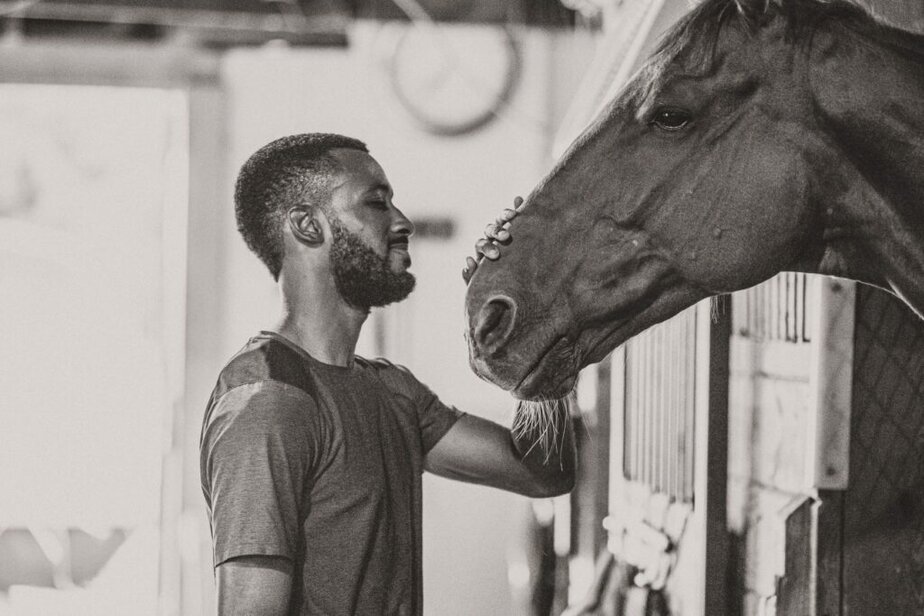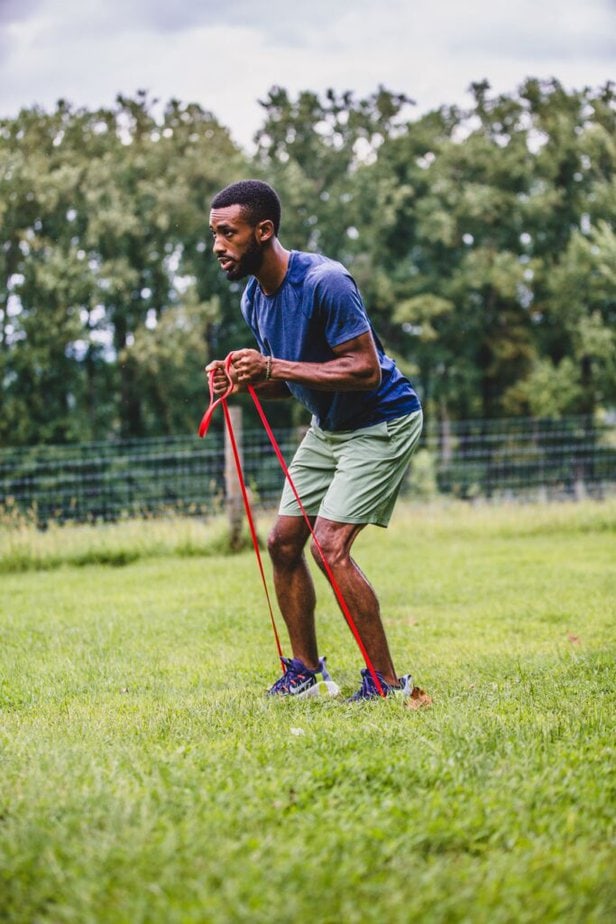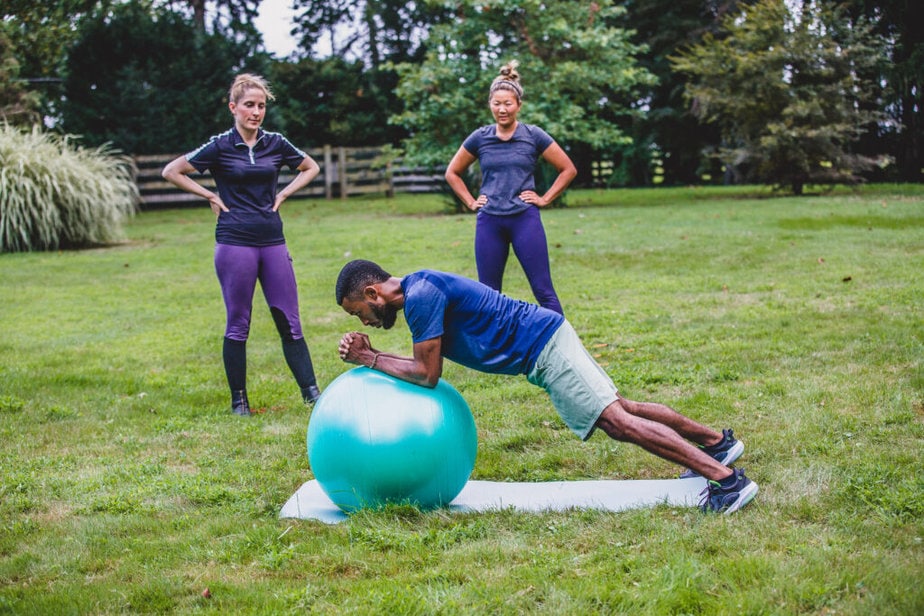IFA SIMMONDS
Pro-Tips for Equestrians to Ride at Their Best

Part 1:
· Resistance Training
· Importance of Protein
· Hydration
Equestrians know that riding has a ton of health benefits, including:
· Elevating your heart rate in the canter/trot can help burn serious calories while strengthening the lungs and heart
· Improving balance and stability by exercising on a moving horse
· Improving coordination by practicing how and when to use multiple rein, leg, and seat aids
· Providing emotional and stress relief through bonding with your horse
To make these benefits even more effective, consider the following fitness pro-tips to stay in shape while participating in this beautiful sport of ours:

Resistance train to improve strength and stamina.
Riders, just like you need resistance training, too! Resistance training isn’t limited to just weighted exercises like big machines and dumbbells at the gym. Most people hear resistance/strength training and automatically think heavy weights or “bulking up” and, honestly, that’s only one aspect of what’s accomplished with this training modality.
The fundamental method of this exercise technique is moving weight against gravity. Believe it or not, resistance training starts with your very own bodyweight. The best way to start or further your journey is by adding extra resistance into your workouts with products like the TRX suspension trainer straps and elastic bands. For example, TRX is an acronym for Total Body Exercises. Chances are you’ve seen these yellow and black straps at the gym or in a TV commercial sometime over the past 10 years. This is a highly portable performance training tool that leverages gravity with your bodyweight to complete hundreds of total body exercises and workouts.
Interestingly, in the beginning, resistance bands were predominantly used for rehabbing muscles recovering from injuries. Nowadays, bands are used for both physical therapy and muscle strengthening exercises. There are quite a few varieties of bands on the market, and many uses for each of them.
TRX straps and resistance bands provide greater functionality and performance than your typical large exercise machines, and most machines take up more space and have price tags in the hundreds-to-thousands of dollars just to get started. Both TRX straps and resistance bands are perfect for all fitness levels and travel extremely well (in places like your riding backpack, tack trunk, and luggage).
We’re in the second decade of the 2000s, and the year 2020 proved a very pivotal year in demonstrating what is possible within health and wellness. Virtual and in-home fitness, as well as fitness technology, has changed exponentially and has made great strides towards becoming the norm. For the first time in history, technology and fitness have become readily available to anyone with just enough space, time, and motivation. Starting with just your bodyweight, there are a ton of workout options waiting for you online including virtual personal, small group, and group exercise training. These simple, versatile tools are the perfect companion for fitness at home, at the barn, or while traveling.
Keep in mind, though, no fitness tool can do everything, so it’s important to vary the use of different tools like the straps and bands by using their light, moderate, and challenging options at a variety of repetitions depending on where you are in a program. If you’re a beginner, always start with 15 to 20 repetitions at easier resistances for your exercises.

Regulate your protein intake.
Protein helps us build muscle while boosting metabolism and can even increase the body’s fat burning abilities. It’s important to regulate protein intake in your diet to help with muscle repair, growth, and recovery during our long days in the saddle. Protein has more functions than most of us realize:
· Athletes typically need more protein intake because of the higher demands placed on their body.
· The right protein intake helps to build both strength and muscle; riders looking to build strength eat an ideal amount of protein coupled with exercise.
· Are you recovering from a prior injury? The general rule of thumb for protein intake is 0.5-1.5 grams per pound of body weight to see and feel improvements.
· Ever heard of collagen? It’s the most abundant structural protein in your body, which helps the skin, ligaments, tendons, and bones function properly.
· A structural protein called keratin powers your hair, skin, and nails.
· Consuming the right amount of protein helps to prevent weight gain and improves weight loss.
Consider including more protein-rich veggies in your diet, such as leafy greens like spinach, kale, and brussel sprouts. Additional protein options include fish, turkey, nuts, and legumes, all of which are known for their lean protein.
Stay hydrated.
How much water do you drink each day? I mean actual, unadulterated water, not the water you used to make your coffee! We’ve all heard about staying hydrated, but did you know you can lose about 32 ounces of water while you sleep just through the humidity in your breath? WOW! Multiply that by 7 days a week and that’s almost 1.75 gallons of water that just evaporated while you slept! We need to replace that water, and more.
Water is one of the most important elements our bodies need because it effects every cell structure we’re made of. The human body is roughly 75% water and 25% solid matter. Your brain is 85% water and very sensitive to depletion and dehydration. Anyone who’s training for an upcoming show or doing any moderate-to-strenuous workouts must be very conscious of their hydration levels both before, during, and after an event.
We need water for bodily functions like:
· Strong bone formation
· Energy maintenance
· Melatonin production
· Brain focus and memory

Each one of us should, on average, consume about half of our body weight in ounces of water each day, but an athlete needs even more. Do you have a tough time drinking water throughout the day? Quick tip: place a container of 8-16oz of water next to your bed and drink all the water before getting out of bed in the morning. This helps to regulate the amount of water lost during sleep and get the body revived for the day. Are you an athlete? Drinking between 70 to 100+ ounces of water daily is standard for most active athletes. Again, I ask, how much water do you drink each day?
Stay tuned for part two of this three-part pro-tip rider fitness series.
For more great tips or to inquire about a fitness program, contact Ifa with the Equestrian Fitness Academy today!
Ifa is a lifelong fitness enthusiast and horse lover. He is a performance coach who’s worked with a host of different sports and demographics throughout his 10+ year career. Training your common sports like basketball, football, baseball, soccer and others. He’s also enjoyed training the other sports like fencing, Irish dance, triathletes, Hawaiian outrigger canoe racing, as well as training various equestrian disciplines for over 5 years. With quite a few years behind the scenes of working for different fitness facilities in multiple states, Ifa has reinvented himself by creating his own brand focused specifically on Equestrian Fitness. Dating back to his Eagle Scout days, he truly enjoys the outdoors and you can find him on a hiking trail, at an arboretum/botanical garden, or horse shows in New Jersey. When he isn’t enjoying the great outdoors, he’s writing articles/sharing information, or coaching with his riders in the Equestrian Fitness Academy (EFA).




















SOCIAL